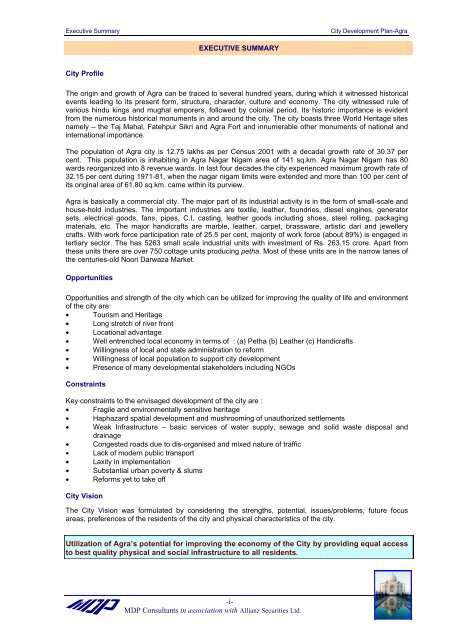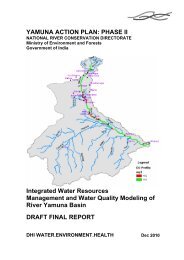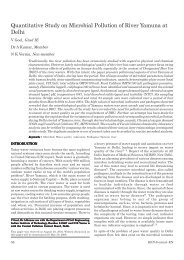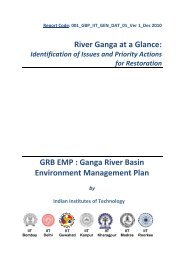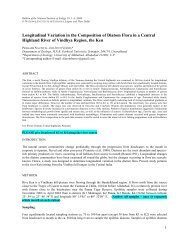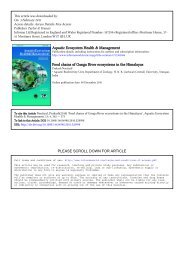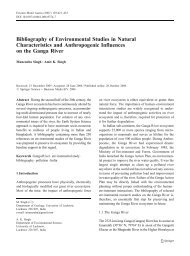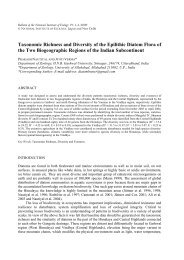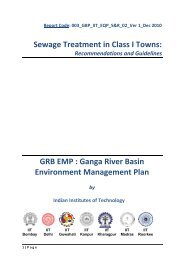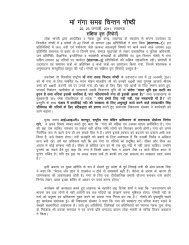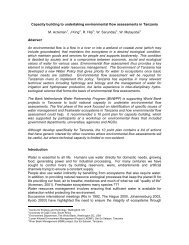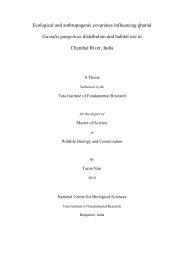JNNURM - GANGAPEDIA
JNNURM - GANGAPEDIA
JNNURM - GANGAPEDIA
Create successful ePaper yourself
Turn your PDF publications into a flip-book with our unique Google optimized e-Paper software.
Executive Summary City Development Plan-Agra<br />
City Profile<br />
The origin and growth of Agra can be traced to several hundred years, during which it witnessed historical<br />
events leading to its present form, structure, character, culture and economy. The city witnessed rule of<br />
various hindu kings and mughal emporers, followed by colonial period. Its historic importance is evident<br />
from the numerous historical monuments in and around the city. The city boasts three World Heritage sites<br />
namely – the Taj Mahal, Fatehpur Sikri and Agra Fort and innumerable other monuments of national and<br />
international importance.<br />
The population of Agra city is 12.75 lakhs as per Census 2001 with a decadal growth rate of 30.37 per<br />
cent. This population is inhabiting in Agra Nagar Nigam area of 141 sq.km. Agra Nagar Nigam has 80<br />
wards reorganized into 8 revenue wards. In last four decades the city experienced maximum growth rate of<br />
32.15 per cent during 1971-81, when the nagar nigam limits were extended and more than 100 per cent of<br />
its original area of 61.80 sq.km. came within its purview.<br />
Agra is basically a commercial city. The major part of its industrial activity is in the form of small-scale and<br />
house-hold industries. The important industries are textile, leather, foundries, diesel engines, generator<br />
sets, electrical goods, fans, pipes, C.I, casting, leather goods including shoes, steel rolling, packaging<br />
materials, etc. The major handicrafts are marble, leather, carpet, brassware, artistic dari and jewellery<br />
crafts. With work force participation rate of 25.5 per cent, majority of work force (about 89%) is engaged in<br />
tertiary sector. The has 5263 small scale industrial units with investment of Rs. 263.15 crore. Apart from<br />
these units there are over 750 cottage units producing petha. Most of these units are in the narrow lanes of<br />
the centuries-old Noori Darwaza Market.<br />
Opportunities<br />
Opportunities and strength of the city which can be utilized for improving the quality of life and environment<br />
of the city are:<br />
• Tourism and Heritage<br />
• Long stretch of river front<br />
• Locational advantage<br />
• Well entrenched local economy in terms of : (a) Petha (b) Leather (c) Handicrafts<br />
• Willingness of local and state administration to reform<br />
• Willingness of local population to support city development<br />
• Presence of many developmental stakeholders including NGOs<br />
Constraints<br />
Key constraints to the envisaged development of the city are :<br />
• Fragile and environmentally sensitive heritage<br />
• Haphazard spatial development and mushrooming of unauthorized settlements<br />
• Weak Infrastructure – basic services of water supply, sewage and solid waste disposal and<br />
drainage<br />
• Congested roads due to dis-organised and mixed nature of traffic<br />
• Lack of modern public transport<br />
• Laxity in implementation<br />
• Substantial urban poverty & slums<br />
• Reforms yet to take off<br />
City Vision<br />
EXECUTIVE SUMMARY<br />
The City Vision was formulated by considering the strengths, potential, issues/problems, future focus<br />
areas, preferences of the residents of the city and physical characteristics of the city.<br />
Utilization of Agra’s potential for improving the economy of the City by providing equal access<br />
to best quality physical and social infrastructure to all residents.<br />
-i-<br />
MDP Consultants in association with Allianz Securities Ltd.


